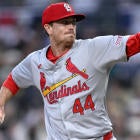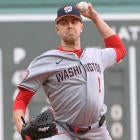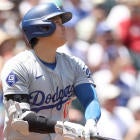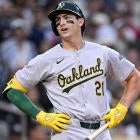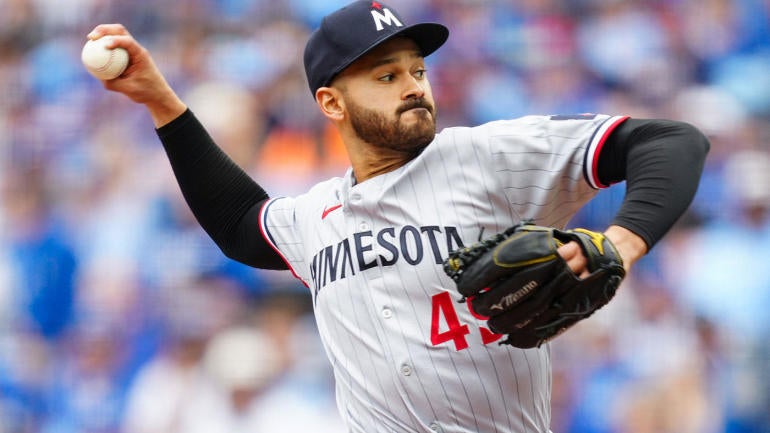
"ERA has little predictive value" isn't exactly a groundbreaking statement in 2024, but judging by the reactions whenever I say, "Yeah, I'm not too worried about Pablo Lopez" or "No, I don't really think Seth Lugo and Tyler Anderson are aces," it hasn't quite sunk in for everyone. It's easy, in the relative calm of the offseason, to look at Merrill Kelly's 3.29 ERA or Dylan Cease's 4.58 mark last season and dismiss them as the result of something largely out of the individual pitcher's control.
But when you're in the midst of the season, and you've got a highly regarded pitcher like Lopez dragging you down and you're watching other teams rack up great start after great start from Lugo and Anderson, it can be hard to keep things in perspective.
But that's what we're here to do. We're here for some perspective. Because the thing you have to keep in mind as a Fantasy player is that, while ERA is important – it's one-fourth of the starting pitcher categories in Roto, and has a big impact on at least one of the other three – it also … just doesn't matter very much. At least not when trying to project the rest of the season. To prove the point, we're going to look at the past five years of pitching performance, separating out first-half performance from second-half performance to prove what you should already know: ERA just doesn't matter very much when trying to predict future performance.
First, we'll start with the extreme ends of the spectrum. From 2018 through 2023 (not counting the shortened 2020 season), 30 pitchers had an ERA below 2.50 in the first half of the season, with an average of 2.15. Of those 30, 14 didn't qualify for the ERA title in the second half, and just seven maintained an ERA below 3.00 – four had an ERA over 4.00, with another at 3.97.
On average, they've seen their ERAs rise from 2.15 to 3.32 in the second half. What's interesting is, that's even higher than their 2.91 FIP in the first half, though right in line with the 3.29 xFIP. Jacob deGrom matched his 1.68 ERA in the first half of 2018 with a 1.73 mark in the second half, but then Kevin Gausman's 1.73 mark in the first half of 2021 – the second-best mark among pitchers who qualified in both halves of the season – was followed by a 4.42 ERA in the second half.
On the other side, we had 26 pitchers with an ERA over 5.00 in that same sample, and predictably, half of them also didn't qualify for the ERA title in the second half. If there's one thing that is true for both pitchers who are succeeding at the top of the game and those struggling mightily, it's that attrition is the most powerful force in the game.
However, even among those 5.00-plus ERA pitchers from the first half, two still managed an ERA below 3.00 in the second half, while another two had an ERA below 4.00. If you're looking for reasons to be optimistic about Pablo Lopez (and you should be), look to Luis Castillo's 2018: He had a 5.49 ERA in the first half, but with a much better 4.02 xFIP, and lo and behold, he was one of the best pitchers in baseball in the second half, sporting a 2.44 mark.
Pitchers who struggled mightily in the first half, on the whole, continued to struggle in the second half, of course – if you put up a 5.00 ERA for half a season, it's probably because you aren't very good – but they, too, saw significant improvements overall; from an average of a 5.62 ERA in the first half to a 4.64 mark in the second half, again right in line with their 4.57 xFIP.
And the unpredictability of ERA didn't just hold on the extremes. If you look at just the pitchers with an ERA between 3.00 and 4.00 – what I'd deem "generally Fantasy relevant" – 54 of 133 first-half qualifiers failed to qualify in the second half. Of the remaining 79, 17 saw their second-half ERA rise by at least one run, and 10 more saw theirs drop by at least one run; only 43% had an ERA within 0.50 of their first-half mark.
Taking the sample as a whole, there is almost no relationship between a pitcher's first-half ERA and his second-half ERA:

xFIP, which takes into account a pitcher's strikeout rate, walk rate, and expected homers based on how many fly balls a pitcher gives up, has slightly more predictive value than first-half ERA, but only slightly:

Because, and here's the key thing to keep in mind: ERA is just super noisy. xFIP does a better job of drilling down to true talent level – and something like xERA, which quantifies the quality of contact a pitcher is giving up – but even our best efforts to predict ERA pale in the face of the game's noisiest stat.
Because ERA isn't just dependent on the skill of the pitcher, which is something that can change from one start to the other depending on where his velocity is and his feel for his pitches on any given day. How good his defense is matters considerably, as does the quality of the opposition, though even if you could accurately account for a pitcher's skill level, how good his defense is, and the quality of the opposition he's facing, ERA would still be hard to predict. The best laid plans of pitchers and projections are nothing compared to the power of a few random, 78-mph liners finding green in a row.
It takes multiple seasons and several hundred innings for ERA to really have very much predictive value, ultimately. It's hard to remember that when you're falling behind the competition during the season, but it's important to keep in mind that you aren't building a team to win what has already happened; you're trying to put together the best team for the future. ERA just isn't going to help you out very much there. FIP will; xERA will even more, though, of course, there's no one simple trick to knowing who will dominate the rest of the way. But there's a reason our starting pitcher rankings for the rest of the season don't look very much like what the current rankings reflect.
So, yes, buy low on Pablo Lopez (5.11 ERA, 3.97 FIP), Dylan Cease (4.14 ERA, 3.16 FIP), and Freddy Peralta (4.03 ERA, 3.53 FIP); try to sell Tyler Anderson (2.48 ERA, 4.56 FIP), Ronel Blanco (2.34 ERA, 4.06 FIP), and Andrew Abbott (3.40 ERA, 4.76 FIP). We can't perfectly predict who will be great moving forward and who will be terrible, but we can say one thing with confidence: Judging pitchers by a half-season of ERA is very likely to lead you astray.











